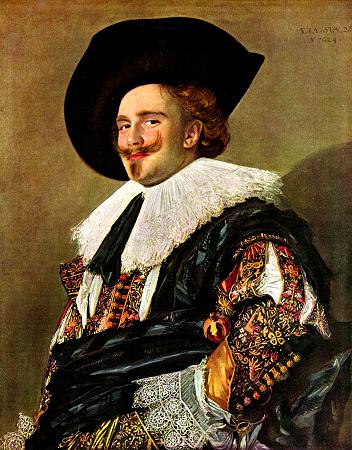Next Friday being Valentine’s Day, this week’s choice of picture is The Laughing Cavalier, by the seventeenth-century Dutch portraitist Frans Hals, which can be seen at the Wallace Collection in London. According to the Latin inscription in its top right-hand corner the work was painted in 1624, when the sitter was 26 years old. Nothing else is known about him, not even his identity. But to judge by the symbolism of the designs on his richly embroidered sleeve (see below) it seems that the work was intended to declare his infatuation with a woman. It may even have been commissioned as a love token: a kind of valentine, in code.
The painting owes its modern celebrity to the Fourth Marquess of Hertford, principal creator of the Wallace Collection, who paid a small fortune for it at a Paris auction in 1865. Hals’s reputation had undergone a sudden revival during the middle years of the nineteenth century. His free and lively handling of paint seemed both prophetic and eloquent to the contemporaries of such modern masters of pictorial improvisation as Eugene Delacroix and Edouard Manet. His principal champion was the French political journalist and art critic Theophile Thore, whose influential essay of 1860 was largely responsible for the sudden rise in Hals’s stock. “All aspects of [Hals’s] art are instructive,” wrote the enthusiastic Thore. “All his brushstrokes stand out, aimed exactly and wittily where intended. One could say that Frans Hals painted as if fencing, and that he flicked his brush as if it were a foil. Oh, the adroit swashbuckler, extremely amusing to observe in his beautiful passes! Sometimes a little reckless to be sure, but as skilful as he is bold.”
Thore’s paean of praise to Hals may also help to explain the invented title of The...


